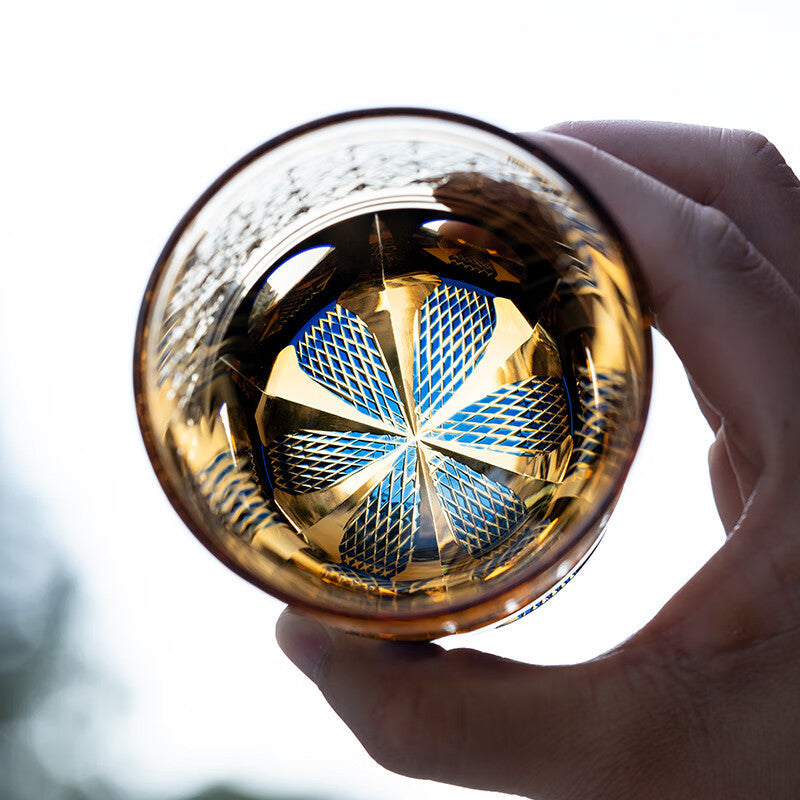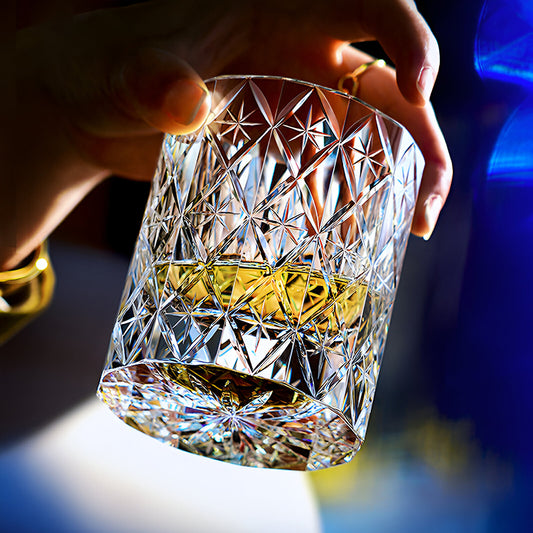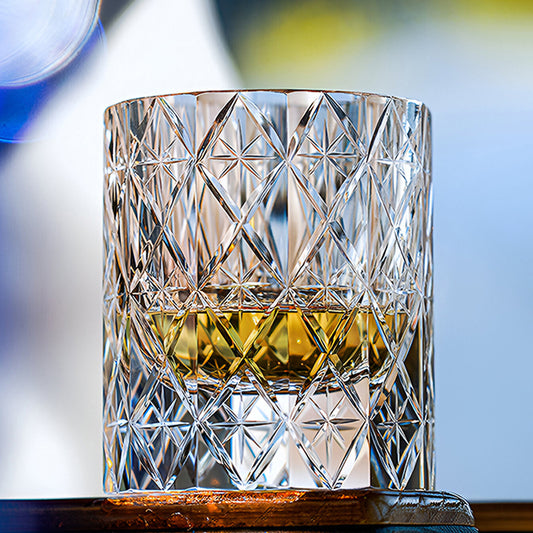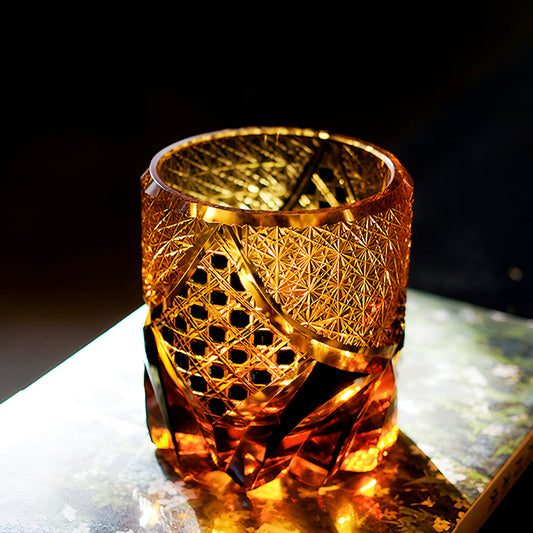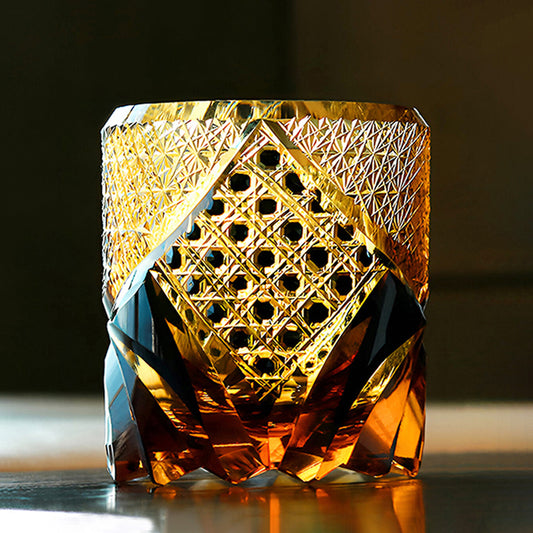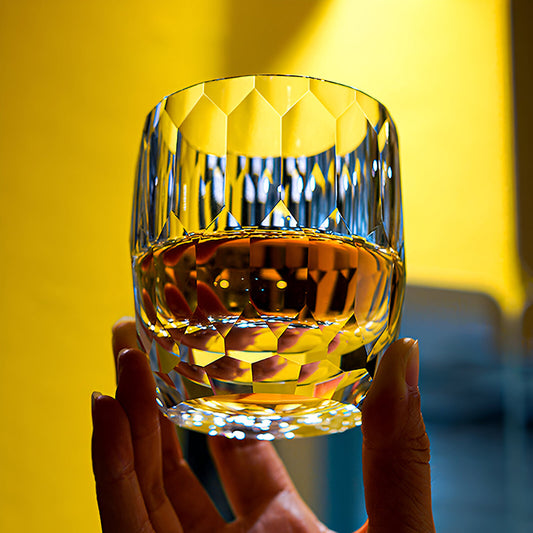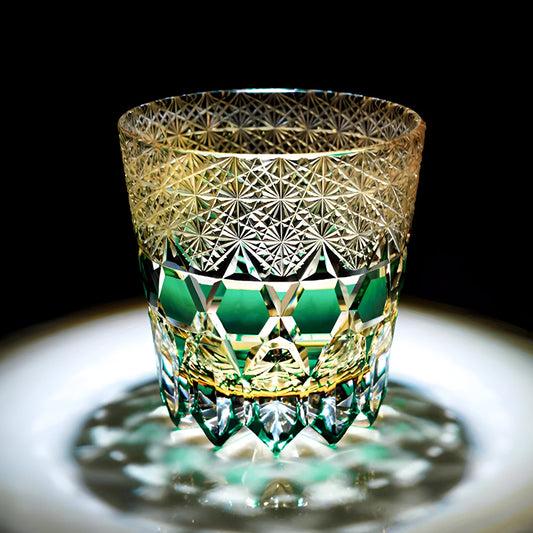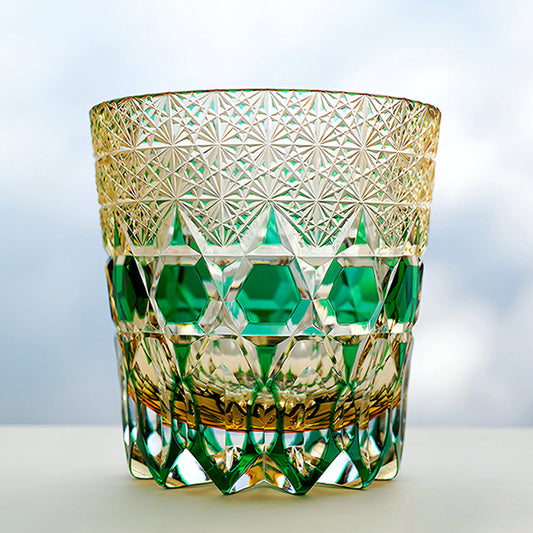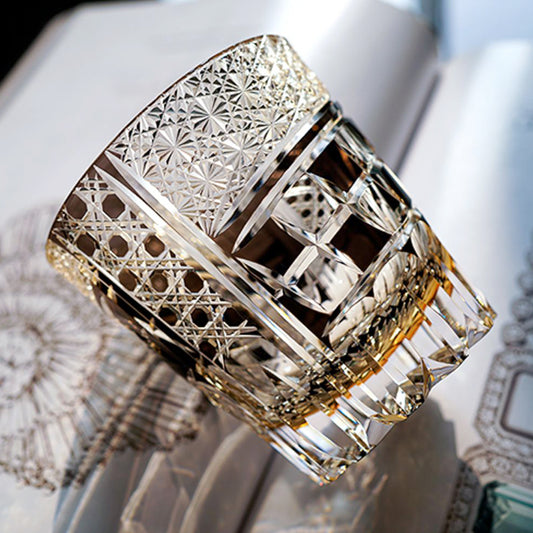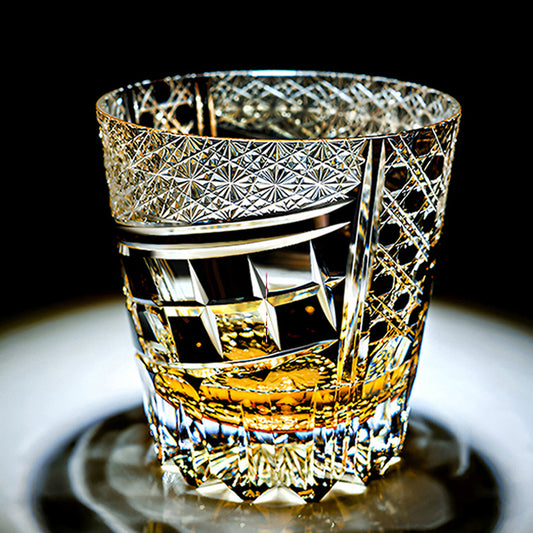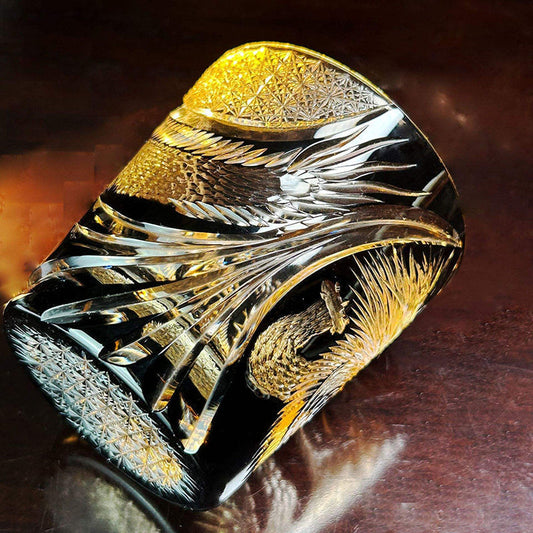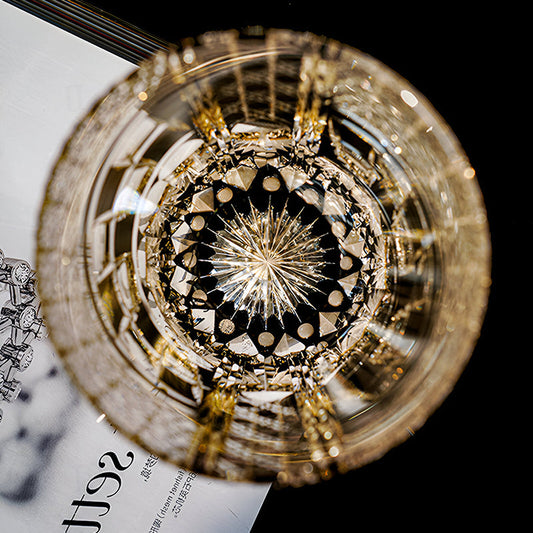Edo Kiriko is a glass cutting technique known for its intricate patterns and exquisite craftsmanship. However, with the advancement of modern production technologies, many machine-made glass items have started to imitate the appearance of Edo Kiriko, attempting to produce similar products at lower costs. For consumers, distinguishing between handcrafted Edo Kiriko whiskey glass and machine-made ones has become a crucial issue when making a purchase.
Below, we will guide you on how to differentiate genuine handcrafted Edo Kiriko whiskey glass from machine-made ones based on factors such as touch, visual details, cutting marks, and overall texture.
1.Touch: Sensing the Texture of the Cuts
Handcrafted Edo Kiriko whiskey glass exhibit a unique tactile sensation on their surfaces. This sensation stems from the subtle traces created during the artisan's manual cutting process and the warm feeling retained in the glass after polishing. Specifically:
The touch of handcrafted Edo Kiriko is substantial.
In handcrafted glassware, the depth of the cutting lines varies, with slightly rounded edges to the cut lines, providing a natural delicacy when touched. This feeling originates from the artisan's hand-carved results using a diamond wheel. Even after polishing, handcrafted Edo Kiriko retains some of its unique handmade texture.
The touch of machine-made glassware is relatively smooth.
The cutting sections of machine-made glass are typically achieved through machine pressing or laser cutting, resulting in consistent cutting depths, a very smooth surface, and a lack of variation. While appearing uniform, the touch feels rigid, lacking the warm and smooth sensation characteristic of handcrafted glass.
2.Observing Bottom Details: Distinguishing Handcrafted from Machine-made
The bottom design of Edo Kiriko glassware is a crucial factor in differentiating between handcrafted and machine-made glassware. By carefully observing the processing marks at the bottom, you can easily discern the differences between the two:
Handcrafted Edo Kiriko glass naturally retains processing marks at the bottom.
Handcrafted Edo Kiriko whiskey glass typically preserve some subtle handcrafted marks at the bottom, such as imperfectly symmetrical polished areas or tiny bubble imprints. These marks are inevitable characteristics of the handcrafting process, showcasing the unique charm of handcrafted glass.
Machine-made glassware bottoms are flat and smooth.
The bottoms of machine-made glass items are usually very uniform, appearing extremely smooth and flawless. This is because machine-made glassware undergoes standardized treatment at the mold production stage, completely eliminating any irregular marks. While they may appear more "perfect," these mechanized marks lack the uniqueness associated with handcrafted production.

3.Observing Cutting Patterns: Distinguishing Handcrafted from Machine-made
The cutting patterns are the essence of Edo Kiriko whiskey glasses, and the differences between handcrafted cutting and machine cutting are significant in the patterns.
Handcrafted cutting patterns vary in depth.
Handcrafted Edo Kiriko glassware typically exhibits varying cutting depths, as artisans adjust the intensity and angle of cutting based on design requirements, creating a natural sense of depth. These varied cutting patterns are particularly noticeable in light, producing richer light and shadow effects.
Machine-cut patterns have consistent heights.
Machine-made glassware cutting patterns are usually achieved through mechanized laser cutting, resulting in consistent depths with uniform lines that lack the dynamic feel of handcrafted cutting. While these patterns may appear "perfect," they can seem rigid and lack a bit of vitality compared to handcrafted cutting patterns.
4. Touch the wall of the glass with your hands: look for traces of hand-cutting
The wall of the hand-made Edo Kiriko will retain some subtle traces of hand-cutting after cutting, which cannot be imitated by machines.
The wall of the hand-made Edo Kiriko has a distinct sense of layering
The wall of the hand-cut glass usually forms a natural sense of concavity and convexity due to the different cutting strength of the craftsman. This sense of concavity and convexity not only increases the visual sense of layering, but also makes the touch of the glass wall more real.
The wall of the machine-made glass is smooth and uniform
The wall of the machine-made glass has no traces of hand-cutting at all. Its surface is usually cut after molding, and the cutting lines are uniform and the surface is too smooth.

5.Observing Light and Shadow Effects: Handcrafted Elegance
The allure of Edo Kiriko glass lies in its play of light and shadow, with distinct differences between handcrafted and machine-made glassware in terms of light and shadow effects.
Handcrafted Edo Kiriko glassware displays richer light and shadow effects.
Handcrafted Edo Kiriko glasses, with their hand-cut designs, exhibit multi-layered refraction effects when illuminated by light. Due to the varied depths of each cut line, light passing through the glass creates diverse degrees of refraction and reflection, resulting in dynamic light and shadow interplay.
Machine-made glass presents a monotonous play of light and shadow.
Machine-made glass, characterized by uniform and unchanging cut lines, lacks the dynamic visual impact of handcrafted glassware. The refraction and reflection effects of light appear simplistic and monotonous due to the lack of variation in the cut lines.
6. Judging from the overall texture: Handmade is more vital
The reason why handmade Edo Kiriko glass is fascinating is not only because of its exquisite craftsmanship, but also because it has a kind of vitality that cannot be replicated.
The "spirit" of handmade glass
Since the handmade Edo Kiriko glass is carved by craftsmen one by one, each piece carries the craftsman's hard work and emotion. It is not only a glass product, but also a work of art full of vitality.
The "mechanical sense" of machine-made glass
Although the machine-made glass has a delicate appearance, it lacks the uniqueness of handmade, and gives people a sense of indifference of "industrial manufacturing" as a whole, which cannot be compared with the warmth and emotional resonance brought by handmade glass.

Conclusion: Experience is the Best Teacher
To truly master the art of distinguishing between handcrafted Edo Kiriko whiskey glass and machine-made glass, the best approach is to observe, touch, and compare extensively. Only by witnessing and feeling genuine handcrafted Edo Kiriko glass firsthand can one truly appreciate the significant differences between it and machine-made glass. Practice and experience are invaluable in developing a keen eye and understanding for the craftsmanship and artistry that go into handcrafted glass.


